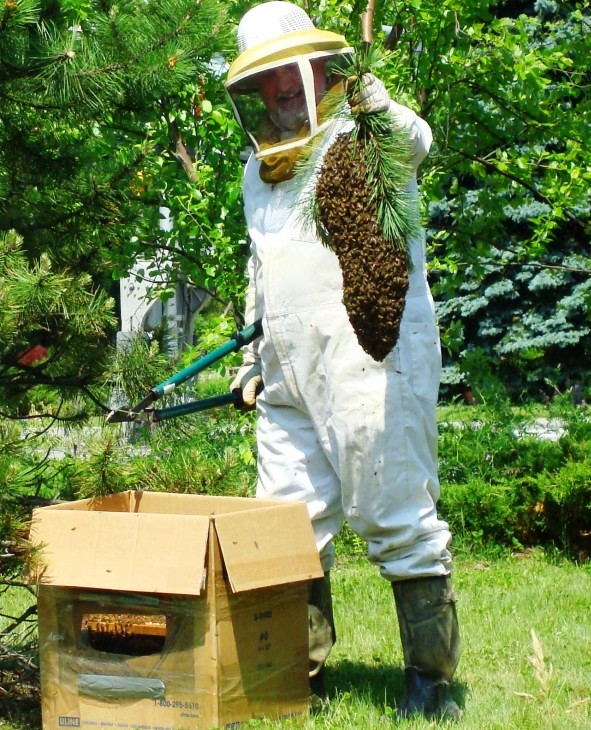
A farmer introduces bees into a beehive. smart technology can help farmers eradicate deadly varroa mites. PHOTO BY BANGOR DAILY NEWS
Farmers, who have lost the entire bees stock to the varroa destructor mites and viruses, can eradicate the pest with smart technology sensors, which automatically turn on heaters upon hive infestation.
The pest, which is also called the varroa destructor mite, can destroy the entire bee colony by sucking blood or spreading the deformed wing virus.
Deformed wing virus causes malformation and malfunction of the wings, therefore, limiting movement.
Studies from Japan have shown that the mites do not survive in temperatures beyond 47 degrees Celsius.
“It is not easy to know the infestation of the mites into the hive because one cannot pick a live bee for examination. But the smart technology tool detects the mites from the ‘uncomfortable’ humming bees. It is programmed to turn on installed heaters to gradually increase the hive temperatures to from the way it is programmed,” Domotele Technology's Machine to machine (M2M) innovator Alfred Ahuta said.
The normal body temperature of bees is between 33 degrees Celsius and 35 degrees Celsius.
Although during cold seasons and brooding ‘heater bees’ can beat their wings to raise the hive temperatures.
Their body temperature rises to about 44 degrees Celsius according to the UK’s Telegraph science article.
“The heater eater causes the temperature to rise up to around 47 degrees Celsius. This happens for about two hours. All the mites in the honeycombs and those attached to the bees are destroyed by more than 90 per cent,” he said.
READ ALSO: Smart system counts eggs, detects diseases for poultry farmers
READ ALSO: Farmers device new ways of produce preservation to beat rising temperature
READ ALSO: Smart tool tells farmers cows are ripe for artificial insemination
The sensor is connected to other machine in the Internet of Things network to detect the temperature to have reached the required ‘lethal’ levels for the pests. It takes another 30 minutes to restore the temperature.
The source of heat can be electric and it is only turned on upon instructions from the sensor.
Upon temperature rise, the bees spread out while others swarm outside the hive.
Recent studies are showing an inclusion of a solar panel into the hive to supply heat to bees when it is cold. The same can be customised to the M2M technology to power the hive upon detection of the pests.
















Comments powered by CComment